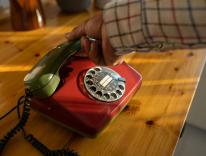It is an ordinary summer afternoon at the Church of the Annunciation in Chisinau, Moldova. Visitors enter to light pencil-thin votive candles, spend a few moments in prayer, and then step forward to kiss icons. They are young and old, male and female. Silver crosses hang from the necks of many of the women. As visitors leave they stop at the doorway, turn, and cross themselves before going off to run errands or return to work.
It wasn’t always this way. Throughout Eastern Europe, Orthodox churches and monasteries had flourished since Christianity first arrived in the region a thousand years ago, but for seventy years in the twentieth century Communist governments forbade overt religious practice. Churches were shuttered or converted into warehouses. Where religious sentiment could not be completely suppressed, religious observance was permitted on the condition that it be subdued to the point of near invisibility. Regular church attendance would draw the attention of local party bosses.
“We had to wonder about covering our heads if we were going to church. There was always the worry, what if I’m seen?” a woman named Malina told me. Malina moved from Moldova to New Jersey in 1999, but every year she returns to her homeland. I met her at Orheiul Vechi, an archaeological site thirty miles north of Chisinau. Also known as the “Church of the Caves,” Orheiul Vechi is one of Moldova’s most popular tourist destinations. The “church” is essentially a cave cut deep into the rock shortly after Christianity arrived in the fourth century. It sits on a high bluff overlooking the Raut River. Malina’s interest in her country’s religious heritage is not unusual in this part of the world. At Orheiul Vechi and centuries-old monasteries such as Saharna and Hancu, tour buses idle their engines while their passengers roam the grounds. Most of the visitors come from other parts of Moldova, or from the neighboring countries of Ukraine and Romania.
“For seventy years nothing was taught about the country’s religious history,” said Alexander, a man I met at Capriana Monastery. “For a lot of people, the experience is a rediscovery of their own past.”
“We always had religion,” said Alina, his companion, “but it was passed on informally, by parents and priests. It was what sustained people through the years of Communism. It gave them hope. It’s almost the same today. Politicians and government officials can’t be trusted, and this part of the world has always been a battleground. But kings and empires come and go, while religious beliefs have been here as long as anyone can remember. Here religious freedom has always been something that couldn’t be taken for granted. It’s something to defend and protect.”
A few days later Silviu, a guide at the fortified Saxon church in the village of Cisnadie, Romania, gave me a tour of the building and grounds. He pointed out the various stages of construction, beginning with the Norman walls and façade and continuing through the Gothic columns and clerestory. Throughout Eastern Europe, churches and other religious buildings are not just places of worship but also records of regional history, which is partly why even during the darkest years of the Soviet era, people went to great lengths to protect churches from the “modernization” plans of government officials. At St. Nikolai’s Church in Brashov, Romania, the frescoes were plastered over to hide them from Communist authorities. In Yerevan, Armenia, plans to raze the thirteenth-century Katoghike church met with such an outcry that Joseph Stalin himself had to back down.
Many Eastern European countries are still struggling to adjust to the rigors and dislocations of capitalism, but somehow they have found the money to restore their country’s cultural symbols. Where centuries of candle smoke have blackened once-brilliant frescoes, the images are being cleaned and touched up. City sidewalks may be cracked, but newly planted flower beds and plush green lawns surround local monasteries.
There is at least one downside to the revival of interest in Eastern Europe’s religious treasures. I asked my Romanian guide Silviu why there were “no photos” and “no video” signs posted at the doorways of all the historic churches. “There’s been so much theft,” he replied. “Professional gangs take pictures of items and try to sell them on the internet. Once they get an offer for something, they come and steal it. All over Romania frescoes have been stolen right off the walls. Even church bells. From one church an entire organ disappeared.”
Still, the churches remain open. All day, every day, in the cities and in the countryside, people enter the churches to look at frescoes, say a prayer, or a light a candle. The traffic is so heavy that every few hours a caretaker comes by with a metal scraper to remove all the wax that has collected on the marble floors.
Please email comments to [email protected] and join the conversation on our Facebook page.
Previous Story
Who ran the Inqusition?
Next Story
Religion Booknotes


